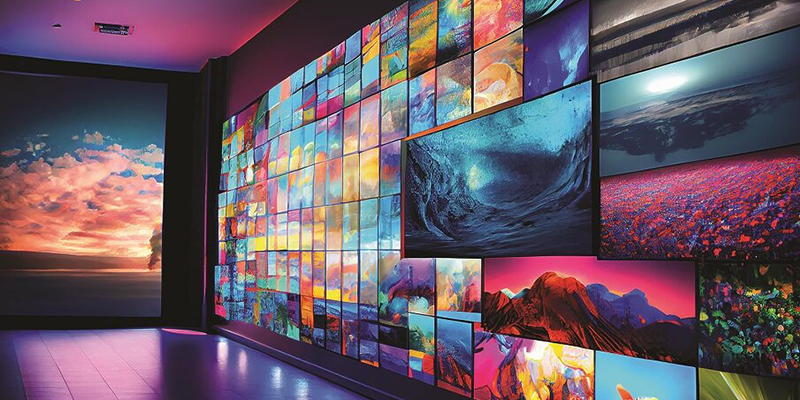
22Miles’ Tomer Mann provides a comprehensive guide to today’s most in-demand digital signage API integrations
A key finding of the recent whitepaper, “Maximizing Profits in Digital Signage Projects” is that API integrations are key to winning and executing more profitable digital-signage projects. Integrating digital-signage systems with other enterprise systems allows you to create something unique for your client: an automated solution with real-time data feeds leveraging the systems they use daily. It’s the ultimate differentiation.
Using API integration, a digital signage content management system (CMS) can put clients’ most critical data at their fingertips for anywhere, anytime visual communications. Customers can see and interact with their data through a unified, customized visual experience, available on any screen including kiosks, video walls, room signage or mobile devices.
To accomplish that, you need a content management system (CMS) with APIs for clients’ existing systems. And since enterprise software varies widely across verticals and among clients, you will likely need a CMS with a very deep library of APIs to accommodate all project opportunities.
I’ve worked on digital-signage projects for a diverse roster of Fortune 500 companies, universities, venues and event facilities, retail and mixed-use sites, and beyond. Though every project is unique, I find some API integrations consistently excite clients.
Consider this a cheat sheet: your guide to today’s most in-demand digital signage API integrations, who’s using them and how.
ChatGPT and The World of AI
AI integration, especially large language models (LLMs), is currently top of mind for most business leaders. ChatGPT by OpenAI and many other similar chat interfaces that have followed in its wake have proven to the public that interacting with complex AI can be simple, natural and easy. Public AI chat interfaces tend to produce broad, superficial responses, however. Businesses want an AI instance that is tailored to their site and data.
On-Demand Webinar: Future‐Proofing Control Room Operations in the Face of a Changing Environment
It’s said that the only certainty is change, and that is no different for control rooms. With advancements in technology, requirements for higher quality visuals, and the need to monitor an ever‐expanding landscape of data and information—how can you help your clients design and maintain a responsive, adaptable, environment for the operator today, that’s ready to meet the challenges of tomorrow? Click here to watch the on-demand webinar!
If your CMS has a ChatGPT API, you can offer your clients a chat interface to interact with their own data, with all the inference capabilities of OpenAI’s game-changing AI. There is no interface to learn or menus to navigate. Users can ask for directions, event information or help in any language and receive useful responses. It’s a huge leap forward in accessibility and usability for any visual communications system.
LLM capabilities are still evolving into corporate communications tools: A site-specific ChatGPT integration can truly wow a client. Within the next three years, however, I predict that this type of interface will become a default expectation for both technology decision-makers and users. At this point, it’s borderline malpractice if you’re not seeking out technology partners with LLM integrations to futureproof your systems.
AI has applications for digital signage chat interfaces as well. A CMS with AI baked into the back end can intelligently map application data to digital signage content templates. In mere seconds, you can complete content layout and design that would normally take a specialist or contractor hours to make. That rapid content development capability means greater value for your clients and higher margins for you — but, more than that, the advent of AI tools will permanently reshape the digital landscape, bringing highly customized solutions in reach for client of every size and budget.
Conferencing and Unified Communications APIs
Integrated conferencing and communications platforms are becoming a baseline requirement across modern campuses, enterprise workplaces, co-working facilities and more. The overwhelming majority of corporate meeting spaces are now equipped to enable virtual collaboration, and 84% of workers have meetings with hybrid participants weekly. With the right APIs, a content management system can allow integrators to combine room signage, digital signs, and even dedicated collaboration devices into a unified, natural collaboration experience.
Currently, the top-requested APIs I’m seeing in this category are Microsoft Teams, Zoom, and Cisco WebEx. The most popular type of integration is for meeting scheduling: Users can schedule a videoconference, reserve an appropriate conference room, and send calendar invitations with links to all participants — all with just a few taps on a sign or mobile app.
However, I’ve also seen increasing interest in APIs that do more. UC device takeover is a popular option that many clients don’t even know is possible until they are shown the option. With device takeover, clients can cross-publish content from the digital signage system to Microsoft Teams Room, Cisco WebEx Room Series or Zoom Room devices. This essentially turns conference room displays into ready-made digital signage screens.
The UC device can also be directed to display key organization messaging, how-to guides and more. This content can be cross-published and broadcast to every UC device in an organization’s ecosystem, for both in-office and work-from-home audiences.
People also use UC integrations to deploy virtual receptionists to help their organizations operate more efficiently. For example, a remotely located employee can greet visitors and accept deliveries via videoconference using a kiosk equipped with a mic and camera. This allows facilities to welcome visitors during off-hours or to increase their check-in throughput during busy times without increasing onsite staffing.
Data Visualization
Executive decision-makers at large enterprises are likely more interested in big-picture alignment and business outcomes than seeing how employees schedule meetings. This category of project stakeholders is often very interested in how digital signage can help them build a more data-driven corporate culture, and that’s where data visualization API come in.
Enterprises are investing heavily in AI and big data systems to help them make more informed business decisions. Yet, despite 91.9% of Fortune 1000 executives saying that the pace of these investments is accelerating, the number of respondents who said their organizations were “data-driven” declined last year, from 37.8% to 24%. With organization-wide data visualization, you can ensure your customers’ KPIs are always on top of the mind.
Executives want their Salesforce and PowerBI dashboards accessible everywhere. An iFrame dashboard isn’t enough; however, a CMS with read/write data visualization APIs can natively display data dashboards, with full interactive editing and control. The CMS can also create, automatically update and display custom business-intelligence data charts for improved KPI tracking across the organization.
Facilities Management
Facility and IT managers use a complex stack of solutions to protect the people and assets under their care and maximize the efficiency of their operations. As this portfolio of solutions grows more complex, it becomes harder to realize insights from across systems or reap the full benefits of the integrated solution set. A unified CMS can connect to facility management systems ranging from access control and emergency alerts to workplace analytics and helpdesk ticketing, providing a one-stop-shop for managers and occupants.
By integrating with access control solutions like Kastle, the digital-signage system can serve custom content to individuals, triggered by a badge or turnstile scan. Buildings can also creak secure check-in kiosks where visitors can enter any required guest information.
Meanwhile, integration with sensor and workplace analytics solutions like Relogix allows a facility to automatically display sensor data indicating room occupancy and conditions on room signs. If room sensors show a reserved space is empty, the reservation can be automatically canceled, releasing the space back into inventory and globally updating the schedule and room signage.
Inside a meeting space or classroom, integration with helpdesk ticketing software like ServiceNow lets occupants use any screen to request assistance: they can send IT helpdesk requests directly from meeting room signage, UC devices, etc.
A digital-signage system can also be leveraged in an emergency as a crucial communications portal. Integrated Emergency Alert Systems like EverBridge, AlertUS or Rave can instantly override scheduled content, instantly publishing alerts such as evacuation notices throughout an impacted area. During an ongoing emergency, the digital-signage system can also be used to deliver directions and live information updates to first responders.
Conclusion
Chances are that your digital-signage clients all need at least one of these APIs. These integrations are the key to solutions that maintain themselves, staying relevant and useful without constant upkeep by you or your customer. Your digital-signage clients probably also need to connect to some more niche systems via API. It’s critical to have a CMS partner with a deep library of native APIs, along with the flexibility and in-house expertise to execute custom programming when the project demands it.
(2023, August 22). Tomer Mann – Commercial Integrator. Retrieved from https://www.commercialintegrator.com/blogs/game-changing-api-for-enterprise-digital-signage/

